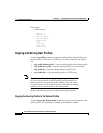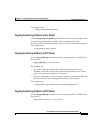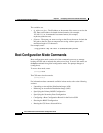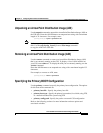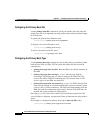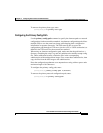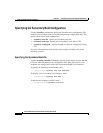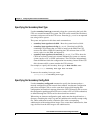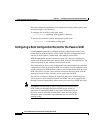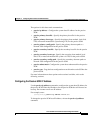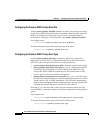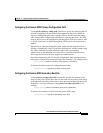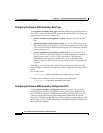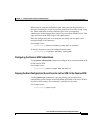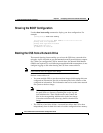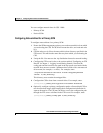
Chapter 2 Configuring User Profiles and CSS Parameters
Boot Configuration Mode Commands
2-16
Cisco Content Services Switch Basic Configuration Guide
78-11424-03
Enter the configuration pathname as an unquoted text string with no spaces and a
maximum length of 64 characters.
To configure the secondary config path, enter:
(config-boot)# secondary config-path f:/bootdir/
To remove the secondary network configuration path, enter:
(config-boot)# no secondary config-path
Configuring a Boot Configuration Record for the Passive SCM
Use the passive command to configure the boot configuration record for the
current passive SCM installed in a CSS 11800. The boot configuration record
consists of the IP address, subnet mask, boot method, and boot file.
With the sync option for this command, you can copy the boot configuration
record from the active SCM to the passive SCM. In most CSS configurations, the
active and passive SCMs will have the same boot record.
This command also allows you to configure the individual components of the boot
configuration record on the passive SCM. For example, you can configure a boot
record on the passive SCM that has a software version that differs from the active
SCM. This allows you run a new software version on the active SCM with the
security of having an older software version on the passive SCM.
You can also configure a different IP address on the passive SCM to track an
active-to-passive state transition between the SCMs. You can accomplish this
through a network management station where you can receive SNMP host traps.
Note The passive command and its options only affect the current passive
SCM. When you configure the passive SCM, the set values are
loaded into its nonvolatile RAM. If the passive SCM transitions to
the active state, it continues to retain these values but is no longer
affected by these commands; boot commands are not saved in the
running-config.



